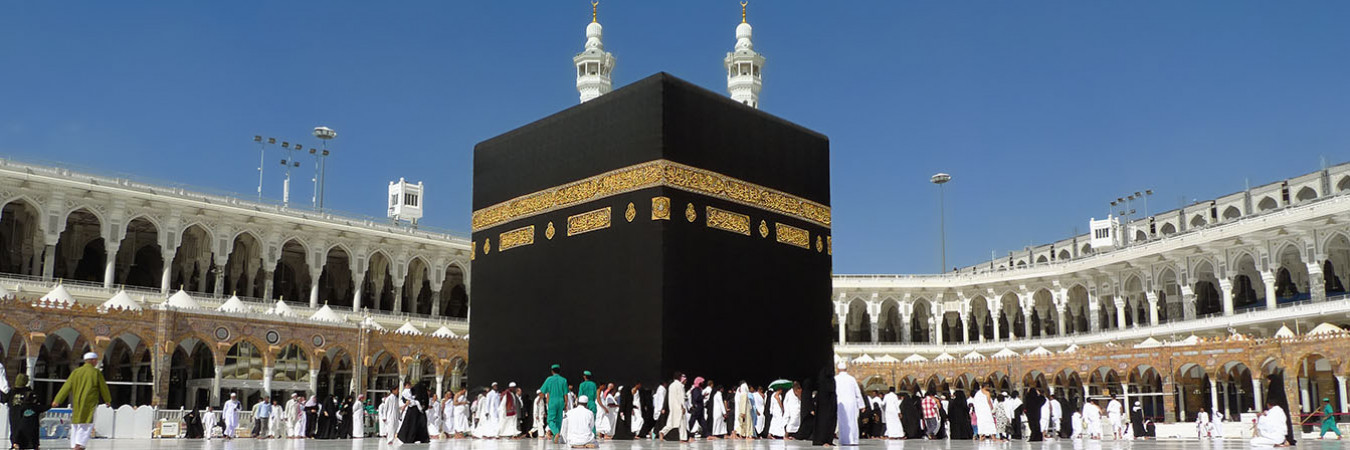
5 Pillars of Islam: Pilgrimage to Mecca
The obligatory pilgrimage to Mecca is also known as Hajj derives from the Arabic term. This pilgrimage to Mecca is obligatory for every physically and financially able adult Muslim to perform at least once in their life. It is the 5th pillar of Islam and takes place during the 8th to 12th day of the month of Dhul Hijjah, the final month of the Islamic lunar calendar.
فِيهِ آيَاتٌ بَيِّنَاتٌ مَّقَامُ إِبْرَاهِيمَ ۖ وَمَن دَخَلَهُ كَانَ آمِنًا ۗ وَلِلَّهِ عَلَى النَّاسِ حِجُّ الْبَيْتِ مَنِ اسْتَطَاعَ إِلَيْهِ سَبِيلًا ۚ وَمَن كَفَرَ فَإِنَّ اللَّهَ غَنِيٌّ عَنِ الْعَالَمِينَ ﴿٩٧﴾
“In it are clear signs [such as] the standing place of Abraham. And whoever enters it [i.e., the Ḥaram] shall be safe. And [due] to Allah from the people is a pilgrimage to the House - for whoever is able to find thereto a way. But whoever disbelieves [i.e., refuses] - then indeed, Allah is free from need of the worlds”1
What is the Significance of Hajj?
قَالَ رَسُولُ اللَّهِ صَلَّى اللَّهُ عَلَيْهِ وَسلم: منْ حَجَّ فَلَمْ يَرْفُثْ وَلَمْ يَفْسُقْ رَجَعَ كَيَوْمِ وَلَدَتْهُ أمه مُتَّفَقٌ عَلَيْهِ
Allah’s messenger, Prophet Muhammad (PBUH) says, “If anyone performs the pilgrimage for Allah’s sake without talking immodestly or acting wickedly, he will return [free from sin] as on the day his mother bore him."3
The pilgrimage to Mecca is, for many, a once-in-a-lifetime opportunity. It is an act of worship that requires a Muslim to have both physical strength and financial readiness. It also offers Muslims an opportunity to expiate all their past sins and start anew before Allah. through enduring the struggle of the journey and performing the obligatory pilgrimage rites.
In response to a divine revelation, Prophet Ibrahim (peace be upon him) brought his wife, Hajar and his first-born son, Prophet Ismail (PBUH) to Mecca - then a barren valley called Becca -, leaving them with basic supplies and entrusting them both to the care of Allah. Soon after, both mother and son were so overcome with thirst that Hajar feared Prophet Ismail (PBUH) was near death. Distraught, she climbed from one point of vantage Safa and trekked to another vantage point Marwa, and back, a total of seven times to see if she could seek help from passing desert travelers. From the act of tracking between the hill of Safa and Marwa is known as Sa’i. The Sa’i is one of the obligatory rites of hajj, thus commemorates the actions of Hajar and encourages the pilgrim to contemplate the state of one’s heart and actions in this temporary world.
From sundown on the second day of Hajj, the pilgrims together with all other Muslims around the globe celebrate the festival of sacrifice (Eid al-Adha) for the following 3 days. The celebration honours the devotion of Prophet Ibrahim (PBUH) in his willingness to sacrifice his son, Prophet Ismail (PBUH) when Allah commanded him so as a test of faith. The practice of slaughtering livestock such as goat, sheep, cow or camel known as udhiyah is also carried out by the pilgrims and Muslims who can afford to do so ensures that the poor and needy of the community are provided for during a time of celebration and festivities.
Did you enjoy reading this article on Zakat? Share it! Hope you’ve enjoyed our 5 Pillars of Islam series. Interested to learn more?
Take the next step in your journey to learning more about Islam and join our Beginners’ Course on Islam (BCI), where we will learn more about the fundamentals of Islam.
References:
1) Quran, Al-Imran, chapter 3 verse 97
2) Mount Arafah is a barren plain over 20 kilometers east of Mecca where Prophet Muhammad (PBUH) had given his final sermon.